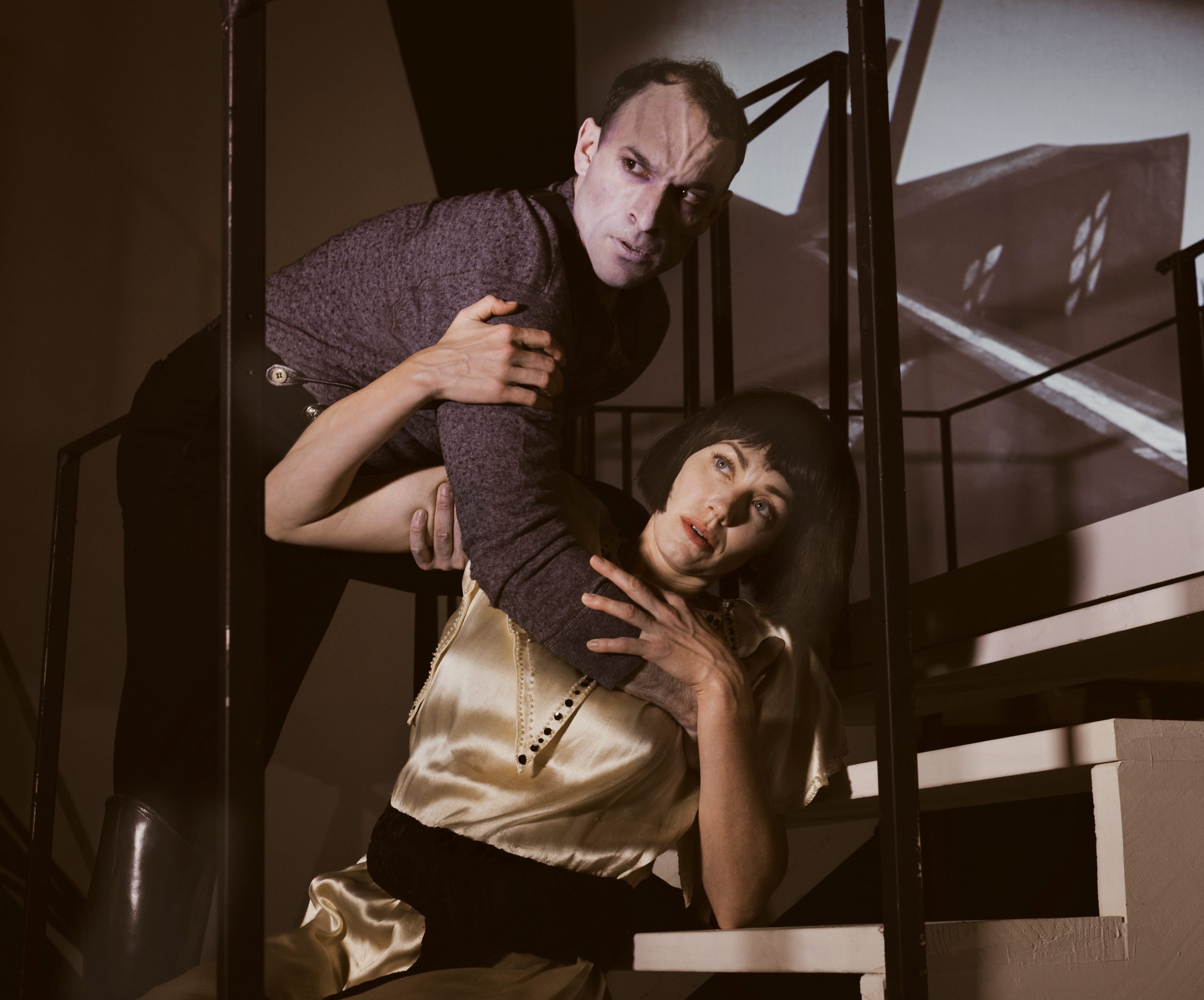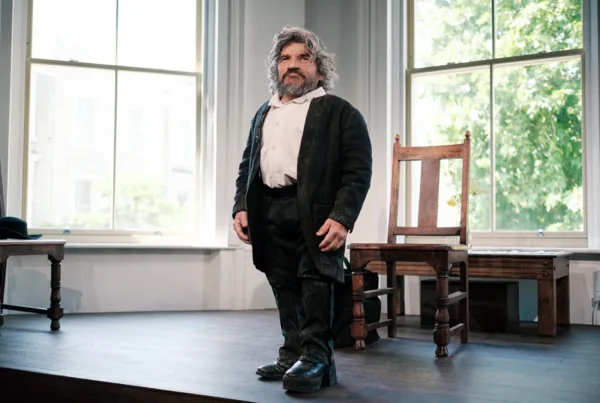
Pittsburgh Independent -“What is to be done?”
The final image projected on the stage during Quantum’s production of The Cabinet of Dr. Caligari leaves its audience with the question: Is it better to know and understand or lock away the atrocities of our collective histories?
Let’s back up. For all the doom and gloom, The Cabinet of Dr. Caligari, adapted by Jay Ball from the Carl Mayer and Hans Janowitz 1920 German expressionist film, is a stylish and arresting world premiere play that faithfully adapts its source material to the stage, while adding powerful commentary of its own.
Walk into any intro to film course, and it’s no surprise to see this movie on the syllabus. Internationally influential, The Cabinet of Dr. Caligari is said to have inspired Universal Studio’s monster movies of the 1930s.
The Cabinet of Dr. Caligari, both the film and Ball’s adaptation, tells the story of a power-hungry doctor, the titular Caligari, who brainwashes a somnambulist (essentially a sleepwalking Frankenstein’s monster) to carry out a series of murders in a sleepy German village. Caligari confines Cesare, the somnambulist, to rest in a cabinet by day, only releasing Cesare at night to do the doctor’s bidding.
Similar to the film, Quantum’s Caligari begins with a staging device, framing a play within a play. In this case, a 1970s theater troupe in East Germany is staging their adaptation of the movie.
Like any good scary story, Caligari strikes a fine balance between camp thrills and modern-day commentary, bringing dread and delight in equal measure. In a playful introduction, Caligari (played with near mustache-twirling villainy by Daniel Krell) haggles with a county clerk over permitting. The clerk, depicted as a shadow puppet on the wall, lends a sense of fun to the otherwise menacing scene. Hey, even your textbook evil villains have to deal with bureaucracy.
Visual gags and delights come courtesy of projection designer Joe Seaman. Bold matte paintings capture the spirit of stark black and white landscape. Clever title cards pay homage to silent film intertitles. As is often the case with Quantum productions, video projections widen the story’s scope, blending live action with prerecorded segments to tell the story beyond the stage to both comedic and dramatic effect.
The stage design, built high above the audience with a long and winding staircase dominating the space, evokes the distortion and sharp angles of the classic film. Craning your neck to the stage the entire performance helps create a constant thrum of unease across the entire performance.
Director Jed Allen Harris manages to capture some of the unnatural, off-kilter camera angles the original film is known for. Like a movie director pointing a camera, spotlights direct audience eyes to characters in peril. In the spotlight, they freeze in moments of peril, capturing the frenzy of a struggle between Caligari’s monster and his victims in a single frame.
At the hands of Cesare, played with menacing physicality by Jerreme Rodriguez, the cast doesn’t stand a chance as they’re claimed one by one. Squint and you’ll think you’re watching and you’ll think you’re watching a film school student’s reinterpretation of I Know What You Did Last Summer.
Stronger, faster, and single minded, you start to wonder, is there any hope of escape from Cesare and Caligari’s control?
In November 2024, it’s easy to draw the parallels between today’s political landscape and the horrors of Dr. Caligari. Is the monster, unable to be stopped, the slow steady progression into fascism and total control?
It’s in the third act, where Ball’s adaptation veers from the original, that we get our answer. In a clever deus ex machina moment that I won’t spoil, The Cabinet of Dr. Caligari sticks the landing with a satisfying conclusion worthy of the classic horror film, with glimmers of hope in the face of these dark times.




